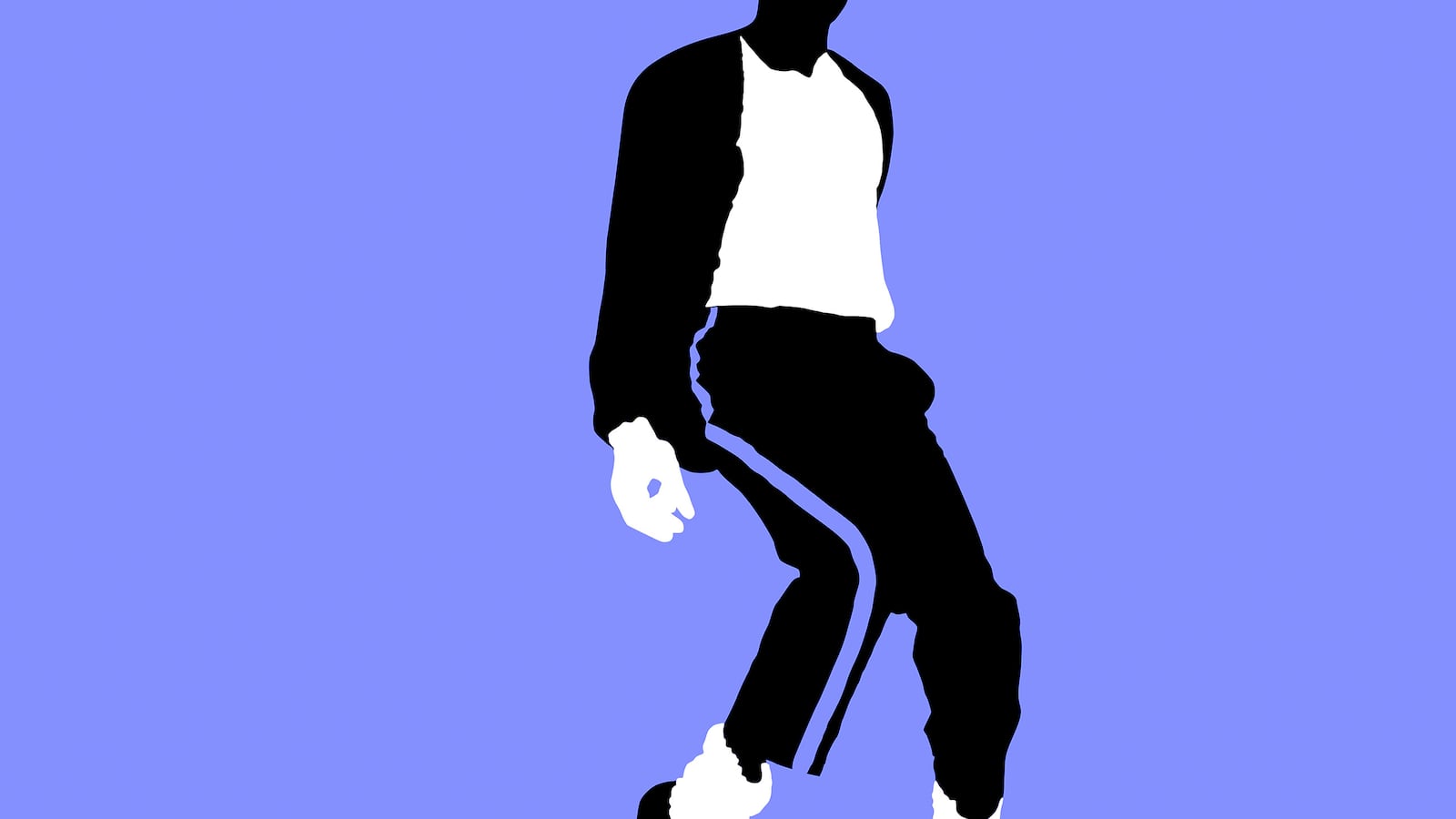Cultural critic Megan Pugh emulates her subject in America Dancing: From the Cakewalk to the Moonwalk, a celebratory mash-up of a century’s history within studies of two legendary performers (Bill Robinson and Michael Jackson), one classic screen team (Fred Astaire and Ginger Rogers), and two innovative choreographers (Agnes de Mille and Paul Taylor).
Vernacular dance mingles with Broadway, ballet, and modern in Pugh’s inclusive narrative, as popular steps strut up from the street to be claimed by professionals and spread through mass media to new audiences. “The history of American dance,” she writes, “is composed not just of self-invention, but of… a longing for mobility that can come from assuming someone else’s character.”
That someone else has frequently been black, and race plays just as vexed a role in American dance as it does in American popular music. Pugh’s assessment of America’s first dance craze at the turn of the 20th century bluntly acknowledges that “digging into black culture was a way for white cakewalkers to mount their own tittering rebellions.” In an unequal society, appreciation can verge on appropriation, even when the appreciation is as heartfelt as Fred Astaire’s tribute to Bill Robinson as “the greatest dancer who ever came to Hollywood.”
In their Hollywood movies, Pugh notes, Astaire and Ginger Rogers danced over social restrictions and class boundaries to affirm that Americans could be and do anything. Robinson, whose incandescent tap dancing made him a Broadway headliner, was reduced in Hollywood to Shirley Temple’s loyal servant in roles that gained him a reputation with younger blacks as an Uncle Tom. “The tension between what was possible and what was allowed, between what movie plots tell us and what movement makes us feel, is central to Robinson’s career, and to the history of American culture,” writes Pugh.
It’s always a pleasure to be reminded of Robinson’s and Astaire’s genius, and Pugh does a nice job of contextualizing their individual achievements: Robinson’s instrumental role in elevating tap into a recognized, uniquely American art form; Astaire’s union of jazz, tap, ballroom, and ballet in an equally distinctive, all-American mélange. But this is familiar material, as is Pugh’s emphasis on the mongrel nature of American culture, born from the clashes and commingling of multiple ethnicities and races.
Her book takes an intriguing turn when she moves on to Agnes de Mille and Paul Taylor, whose achievements in ballet and modern dance aren’t usually considered alongside the work of hoofers like Robinson, Astaire, and Rogers. In Pugh’s (perhaps somewhat overstated) view, all these artists were “celebrated for embodying the country in movement.” It’s certainly true that in ballets like Rodeo and choreography for Broadway hits like Oklahoma de Mille conveyed a vision of American dance as an expression of community and democracy in keeping with the populist spirit of the 1930s and ‘40s, while Taylor’s darker take on our national character in works like From Sea to Shining Sea expressed the disenchantment of the postwar avant-garde.
In both chapters, Pugh continues to ground artists’ individual journeys in larger cultural developments with complex ramifications. The square dances de Mille folded into Rodeo were part of a contemporary revival of folk dancing hailed by leftists as affirmation of working-class culture, while conservatives claimed them in “a backlash against jazz rhythms, city life, blacks, and immigrants.” Taylor’s use of everyday steps like skipping and hopping in his choreography is not so very different—though the venues surely are—from James Brown being inspired by the audiences dancing in the aisles at his electrifying concerts. Brown incorporated their moves into his act and took them on tour, serving as “the Johnny Appleseed of dance,” in one biographer’s words.
Michael Jackson worshipped James Brown, and he too picked up styles from across the country and made them his own. The West Coast “boogaloo” he saw danced on Soul Train in 1979 introduced Jackson to the gliding step he would immortalize as the moonwalk on Motown 25 four years later and to the robot moves he transformed into the “Thriller” video’s zombie dance. In this final chapter, Pugh brings a fresh perspective to Jackson’s oft-told story by fully exploring his immersion in black culture—Motown choreographer Cholly Atkins, Soul Train dancer Damita Jo Freeman, and Michael Peters, “the Balanchine of MTV,” are among those who get welcome acknowledgement—but she also notes his veneration of Fred Astaire and the influence of razzle-dazzle Broadway choreographer Bob Fosse. Like the rest of Pugh’s subjects, Jackson drew inspiration from multiple eclectic sources.
Perhaps more than any of them, Jackson felt the “tension between the freedom of performance and the realities of everyday life” that Pugh states as a key theme in her opening pages. He frequently spoke of dance as an “escape” from reality, and Pugh reminds us throughout that it wasn’t just American performers who found freedom in dance. Audiences saw their own dreams incarnated in movement on stage and screen, and if those dreams weren’t always fulfilled, they left us with extraordinary moments of joy and transcendence: Bill Robinson tapping up a flight of stairs, “the drama of rhythm against constraints”; the push-and-pull of Astaire and Rogers’ greatest dances, “promising that conflict could be worked out with the smoothness of a man putting his hand on the small of a woman’s back”; and Jackson’s moonwalk, which “seems to point forward, toward a spectacular future unconfined by space and time and gravity [but also] backward, to a past of vernacular and professional dancers stretching for decades.” America Dancing pays eloquent tribute to that historical tradition, and to the vision of a freer future that set generations of feet in motion.





